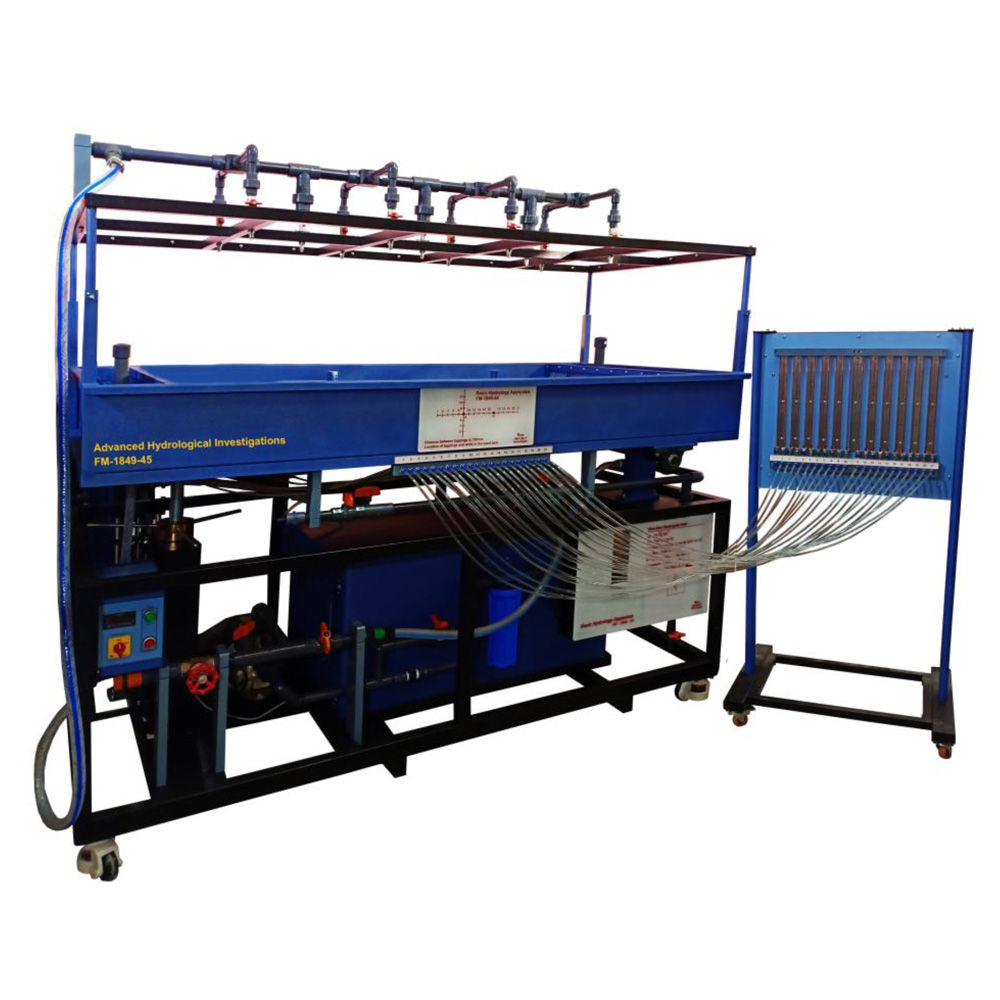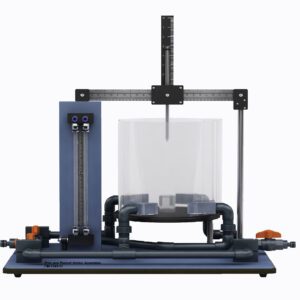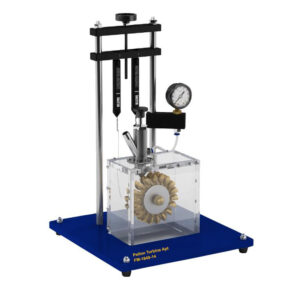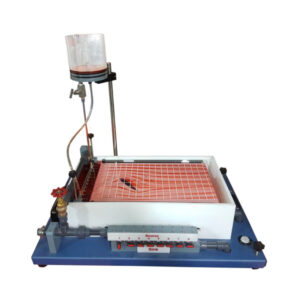FM-1849-45 can be used to study seepage and groundwater flows after precipitation. Furthermore, sediment transport in courses of rivers is also presented in the context of flow obstacles. Variable precipitation density and areas and different groundwater supply and drain possibilities allow a wide variety of experiments.
FM-1849-45 contains a closed water circuit with storage tank and pump. The core element is a sand-filled, stainless steel experiment tank with inclination adjustment. To study precipitation, a precipitation device is available, which is equipped with a timer to define the times of precipitation. The precipitation device consists of 8~11 nozzles. Water can flow in (groundwater) or out (drainage) via two chambers on the side. To study the lowering of groundwater, two wells with open seam tubes are available. By means of a small weir in the in the supply and drain, a course of a river can be generated.
Different water levels can be generated. Water supply and water drain can be opened and closed, thus allowing a wide variety of experimental conditions. In addition, three different models make it possible to study the flow around obstacles and the resulting sediment transport in the river bed. At the bottom of the experiment tank there are measuring connections to detect groundwater levels, which are displayed on 21 tube manometers. Two flow meters with different measuring ranges indicate the supply to the experiment tank. A measuring tank at the drain contains a measuring weir for determining the water level and a force sensor for determining the amount of sediment. The measured values are indicated at the trainer.




